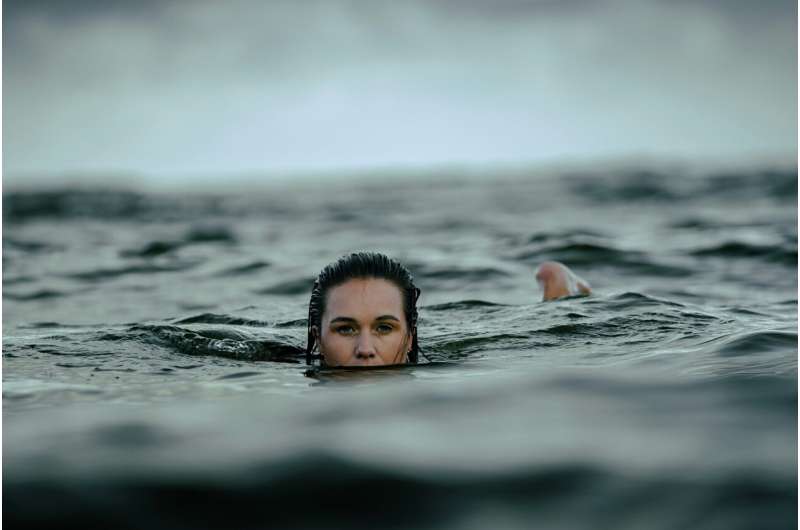This article has been reviewed according to Science X's editorial process and policies. Editors have highlighted the following attributes while ensuring the content's credibility:
fact-checked
trusted source
proofread
Swimming in sewage: UK water forecasts are not keeping people safe, say researchers

The UK's bathing water forecasts need urgent improvement to prevent beach goers from swimming in sewage without warning, a new study has shown.
With increasing attention on UK water companies and others to clean up rivers and beaches, the review, published in WIREs Water, suggests current bathing water forecast models are not keeping the public safe at most of the UK's 600-plus designated bathing water locations.
The current outdated methods cannot accurately predict threats from pollution caused by sudden downpours, the scientists say. Heavy rain can lead to sewage overflows or agricultural run-off. In addition, a lack of water quality sampling and outdated forecast methods leave people vulnerable to sudden increases in chemicals or bacteria in the water.
With coastal and wild swimming becoming more popular, local authorities urgently need to make use of improved forecasting techniques to identify the dangers from bugs such as E. coli or intestinal enterococci, which can be lethal, the researchers said.
Lead author Karolina Krupska, of the University of Reading, said, "We expect beaches that are designated for swimming to be clean and safe, but authorities often don't have good enough information to issue warnings, leaving swimmers and surfers more vulnerable to getting ill. The way we manage our sewage and land means rivers and seas are frequently polluted, and heavier summer downpours due to climate change is making the problem worse at the time of year when people are most likely to be at the beach.
"With existing pollution warning systems, beach users don't have good enough information to decide whether it is safe to go in the water. The science underpinning the next generation of bathing forecasting already exists, but a lack of action means these solutions have not been implemented.
"We need a more reliable and frequently updated early warning system, to ensure people can safely enjoy a coastal swim with the confidence that they aren't putting themselves at risk."
Problems and solutions
The review found that current statistical models that produce early warnings use limited data that often fails to capture extreme bacteria levels from sewage and agricultural discharges.
To strengthen protection for the UK's bathing waters as recreation rises, the authors propose a series of solutions, including:
- Conduct more bacteria sampling during extreme weather events to achieve better statistical models
- Make use of existing state-of-the-art high-resolution rainfall predictions to enable localized warnings, similar to those used for flood warnings
- Make use of new machine learning forecast methods to provide more regular and accurate warnings for specific locations.
River rowing rescue
By providing more accurate early warnings of when rivers and beaches are likely to breach safe levels, people will be able to make better informed decisions about whether to go into the water, the scientists said.
Among the river users asking for better information and cleaner water are University of Reading rowers, who use the River Thames for training—despite reports showing that the river suffered from frequent inflows of sewage and chemical pollution running off roads and fields.
The research was carried out with a review of the scientific literature by scientists at the universities of Reading and Oxford.
More information: Karolina Urszula Krupska et al, Forecasting bathing water quality in the UK: A critical review, WIREs Water (2024). DOI: 10.1002/wat2.1718
Provided by University of Reading



















